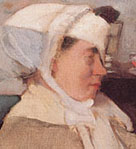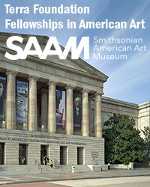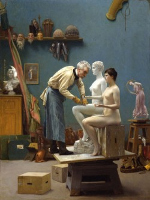X
Please wait for the PDF.
The browser will either open the file, download it, or display a dialog.
The browser will either open the file, download it, or display a dialog.
This essay examines Degas's little-studied Woman with Bandage as it manifests several critical issues: the artist's own failing eyesight, his relationship with his beloved blind sister-in-law Estelle, his mother's early death, and contemporary social constructions of ophthalmologic disease. Through subject matter and experimentation with the formal limits of pigment on canvas, Degas visualizes the intersection between medical anxieties and painting practice.
In late nineteenth-century France, the interest in medieval manuscripts had filtered down into the bourgeois home. Journals such as L'Enlumineur (1889-1900) and Le Coloriste Enlumineur (1893-1898) encouraged young women to decorate their homes with reproductions of medieval manuscripts, and to create their own "aristocratic" heirlooms for family consumption.
Art historians have largely overlooked Emile Bernard’s output during his decade-long stay in Egypt between 1893 and 1904. This essay explores how Bernard came to employ a manner of realism influenced by photography to produce Fumeuse de Haschisch, one of the most compelling projects to emerge from the artist’s "Oriental" period.
Louis Eilshemius often bragged that he had perfected a "method of attracting women involving a pendulum-like motion of the head and a fixed-stare," wrote the artist's obituarist in 1941. This essay explores Eilshemius's interest in mesmerism, or hypnotism, as the method behind the enigmatic paintings for which he had become famous: images of zombie-like, female nudes.
As art publishers such as Goupil became a powerful force in the nineteenth-century art market, reproductive prints and photographs began to adorn ordinary middle-class homes in Europe and North America. The author explores this phenomenon, using contemporary literature and paintings depicting domestic interiors as key sources.
The purpose of "New Discoveries" is to bring to light unknown works of nineteenth-century art—recent acquisitions by museums, works in private collections, and paintings, sculptures or important pieces of decorative arts that have surfaced on the art market.












